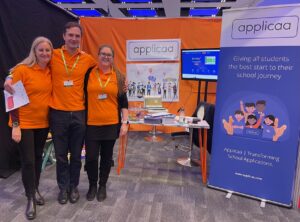Following a wonderful two days at the ISBA conference Wales, we thought it timely to gather a few thoughts. Firstly, it was a joy to meet so many Bursars from different independent schools ranging from standalone preps to all-through independent schools, to independent groups with multiple schools across different age ranges and locations.
From the conversations we had, it seems that applications for bursaries in independent schools are certainly not going away.
The role of Bursar continues to be a challenging one where there is a fine balance between being able to assist those families that need it most with having a robust enough method of identifying them as well as having a quick and accurate way of administering the annual bursarial renewals.
 Some schools noted an increase in the number of bursary applications over the last 18 months partly fuelled by the pandemic and the corresponding impact that may have had on families’ incomes and work situations.
Some schools noted an increase in the number of bursary applications over the last 18 months partly fuelled by the pandemic and the corresponding impact that may have had on families’ incomes and work situations.
Other schools noted that bursary applications had dropped and that some families had faired better with their employers keen to offer more flexibility in terms of working arrangements and location.
This has led to some rural schools noting an increase in student numbers since 2020 as working from home becomes more commonplace allowing families to move away from larger cities into seaside or countryside areas. With good independent schools and all the benefits of additional space and tranquility, this seems a popular choice where flexible working arrangements are available.
The 2021 Independent Schools Council (ISC) census noted that 35% of all pupils in January 2021 received help with fees, an overall increase of 4.3% on the previous year. This clearly shows an overall trend for more families asking for financial assistance.
When asking about the bursary management process, we found that the majority of schools were using a paper-based bursary application form but were actively looking to move to a more technical solution. Some had already implemented an online solution and several explained that they had created their own process using online forms to make the applications easier for parents and staff.
With our own Bursary+ platform, a complete online solution is offered, piloted by the GDST. This starts with a simple online application form and an algorithm that looks at income, expenditure, assets, and liabilities to build up a complete picture. Each school is able to customise the platform, setting their own parameters, which then act as a filter so only those eligible families are guided towards a bursary.
Bursary+ also has technical integration with iSAMS and SIMS meaning all data gathered can then be seamlessly transferred into the school MIS with a few clicks. With all data securely held, 2-factor authentication for log-in and ISO27001 compliance, Bursary+ offers a robust technical solution at a good price.

The cost-benefit analysis shows that benefits outweigh the cost and with easy implementation and removal of admin, paper, and manual data entry, it is worth taking a look
In addition to all these extremely interesting sector trends, we also learned that bursars love to have a chat and a few chocs and so do we 🙂 (our chocolate bowl was looking a bit low yesterday afternoon!)
And who wouldn’t after 18-months of no live events, no conferences, and no networking face-to-face?
A big thank you to ISBA for arranging such a great event and we look forward to being part of the next one.
If you would like more information on Bursary+ please email [email protected].

